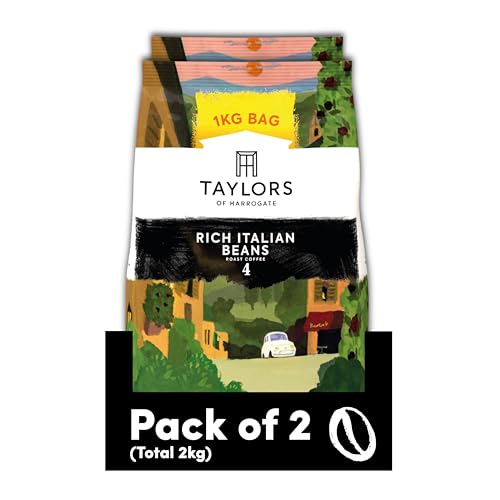Coffee Bean Types: Arabica, Robusta, Liberica, and Excelsa
You've probably heard that different varieties produce distinct flavors. Find out about four of the most common varieties: Arabica. Robusta. Liberica. and Excelsa.
Excelsa beans, which are a variety of Liberica that is grown only in Southeast Asia. They have a fruitier and tarter taste profile and are often used in blends of coffee for added depth.
Arabica
Arabica is the most sought-after coffee in the world, making up 75% of the global coffee beans produced. Arabica beans have a sweeter and less sour taste than Robusta, and come with a variety of flavor profiles. The taste and aroma components of a particular coffee can vary significantly based on the growing conditions and processing techniques used to make it.
The word "coffee" is derived from the Arabic word for berry and coffee beans are actually fruit seeds that grow in bright red berries. It is believed that the ancient Ethiopian shepherds realized that their goats became energy-rich after eating these fruits, and the cultivation of coffee quickly spread across the world.
Coffee beans can be grown at high altitudes, and thrive in cold temperatures and lots of rain. This is why Arabica coffee is thought to be the most delicious type of coffee.
Many specialty coffee shops and roasters insist on using ethically-sourced arabica beans by focusing on fair wages for farmers and sustainable growing practices. These companies often blend arabica beans to make unique specialty coffees that work well with many different methods of brewing. Blending gives bean to cup coffee beans control over the aroma, flavor and body of the coffee. It is typically preferred to achieve a balanced and consistent taste that appeals to a wider market.
Robusta
Robusta beans (Coffea canephora) are the second most common type of coffee bean grown in the world. They have more caffeine per bean and are more protected against diseases and pests. They also contain higher levels of chlorogenic acids, which are antioxidants naturally found in. These acids can cause oxidation in the brewing process, and can result in undesirable flavors.
The plant is more robust than the arabica and can thrive in less favorable conditions. It is able to withstand higher temperatures and thrives in direct sun. It produces more coffee per plant and is growing faster than arabica. This makes it a more economically viable crop to cultivate.
Although it may sound contradictory the fact is that arabica and Robusta beans are often blended to create coffee blends. If you see names like Uganda or Kenya on the coffee bags it's possible there is also some robusta.
While some roasters exclusively use arabica beans, the majority use blend the two varieties to cut costs and maintain quality. To preserve the flavor integrity it is recommended to select the highest quality beans from a reliable source. This can be accomplished by buying your beans directly from a farmer.

Liberica
Liberica beans have a shape that is like a football, which is why they are different from other types of coffee beans. They have a distinctive scent that is fruity and floral with smoky undertones. They are often added to other bean varieties to provide a fuller, more robust flavor.
Liberica coffee beans are available in West Africa, Malaysia (Borneo), and Southeast Asia. They can thrive in low altitudes, and they can tolerate hot, humid climates. They are also more resistant to disease than Arabica or Robusta.
These attributes make them ideal for home cultivation. You can find the seeds on the internet from a variety of sources, however it is best to buy from local producers to ensure the quality of the beans. The ideal conditions for growing Liberica coffee include fertile, deep volcano soils with moderately acidic and sufficient annual rainfall.
Another kind of coffee bean is Excelsa which was previously thought to be a separate species, but was re-classified as a variant of Liberica. These oval-shaped coffee beans are found on large coffee plants that can reach 20 to 30 feet in height at medium altitudes. Their distinctive taste is tart and sour, making them a popular choice for house blends. They have a more subtle scent and a lower caffeine content that is less than Arabica or Robusta however they possess a distinct depth of flavor.
Excelsa
Although they're the fourth most popular type of coffee beans Excelsa beans aren't quite as readily available as Arabica or Robusta. They were actually considered to be a different species of coffee until 2006, when they were reclassified as a synonym for Coffea Liberica var. dewevrei. They are grown in Southeast Asia today and account for 7% of the world's production of coffee. These beans have a distinctive teardrop shape, and a dark, mysterious taste. They're often used in blends to add extra body and a full tart, ripe fruit taste.
Arabica beans are the most sought-after, and are renowned for having a the most delicious taste. They thrive in tropical, warm environments and at high altitudes. They also have a little of acidity. When properly roasted and brewed they can be a bit sweet with hints of nuts, chocolate or even fruit.
Robusta is an extremely close second to Arabica and is responsible for about 40 percent of the world's coffee. These beans are smaller and more round but they have twice the amount of caffeine as Arabica. They are also more bitter than the other two types and have an earthy, woody taste.
Now that you've learned the four most widely used varieties of coffee beans, it's time to choose the perfect cup. If you're looking for a smooth, delicate flavor, opt for an arabica bean or a blend of arabica and robusta beans.
